Table of contents
When we talk about the collective term millet , we usually mean common millet or common millet ( Panicum miliaceum ). The gluten-free grains can be eaten both cooked and raw . Organic ?
Use in the kitchen:
The millet (also called real millet or golden millet ) can be prepared pure like rice or like risotto. If soaked overnight, the cooking time is reduced from 15 to 5-10 minutes. The soaking time of around 20 minutes remains the same. Coarsely ground or broken, millet is suitable for sweet or savory porridges like (wheat) semolina . Couscous can, but does not have to, be made from millet semolina. Alternatives to millet are durum wheat or barley .
Finely ground, the flour can be added to baked goods, such as biscuits. In India, millet is traditionally used to make unleavened flatbread. Because it lacks gluten, millet alone is not suitable for baking cakes or bread.
The nutty taste of millet is very good as an ingredient in vegan stews, soups or cold in salads. A colorful millet and vegetable pan provides healthy variety and can be refined in many ways, e.g. with chili flakes , curry powder , oregano , herbs de Provence , coriander leaves , parsley , basil , rosemary , thyme or mint . Millet also goes well in sweet dishes or smoothies.
Can you eat millet raw? Raw millet can be soaked (5 hours) or germinated (maximum 24 hours) and then enjoyed uncooked in a raw vegetable salad, for example. The raw grains can also enrich muesli: they are an essential component of raw vegan pea muesli (also in pea muesli plus oat flakes ). When the food germinates, numerous complex nutrients and enzymes are formed, which make the germ even more valuable than the bare seeds. See the article Phytic acid or phytate and soaking or germination .
The hulling or grinding process damages the germ, which often results in the release of some germ oil. This high-quality oil therefore oxidizes quickly when exposed to air, which can result in a slightly bitter taste. To remove these traces of oil before cooking the millet, rinse the millet briefly with lukewarm water. If you want to use millet raw, rinsing is not recommended. Millet cannot be ground well when it is wet. If you dry it again, there is a risk of mold forming. However, since these oil residues are neither harmful nor toxic, there is no need to take action unless you really find the raw millet bitter.
In Africa, millet is used to make gluten-free beer. 1 In northern China, millet is used to make wine that is very similar to rice wine.
Vegan recipe for millet porridge with raspberries
Ingredients (for 2 people): 150 g fine millet (organic), 300 ml soy milk , 8 dates , 1 tbsp almond paste ,vanilla powder .
Preparation: Boil the millet with soya milk and let it simmer until it is firm to the bite. Then add the dates cut into rings. Fold in the almond butter, season the porridge with vanilla and decorate with hemp seeds , linseed and/or chia seeds . Add freshraspberries and enjoy warm.
Vegan recipe for hearty millet patties
Ingredients: 100 g millet (organic), 250 ml vegetable stock , 1 onion , 1 clove of garlic , 1 teaspoon rapeseed oil , 2 tablespoons lupin flour , nutmeg ,pepper .
Preparation: Cook organic millet in vegetable stock until soft and then roughly puree with a hand blender. For a spicy taste, fry a diced onion and a finely chopped garlic clove in a pan with a little oil. Knead all ingredients into a dough with lupin flour and season with nutmeg and pepper. You can add cooked peas or grated carrots as desired. Form into patties and fry until golden brown. Serve with fresh salad or guacamole .
Vegan recipes with millet can be found under the note: " Recipes that have the most of this ingredient ".
| Not only vegans or vegetarians should read this: Vegans often eat unhealthily. Avoidable nutritional mistakes . |
Purchasing - Storage
The term millet is actually a collective name for small-fruited hulled grains (small millets). This is why attempts are being made to narrow it down somewhat with trade names. In trade, golden millet means millet that has been stripped of its husk and appears yellowish or golden. However, red, almost white or brown varieties are also available, e.g. brown millet. Millet sold in Europe is almost exclusively panicle millet. Millet cultivation is increasing steadily there.
Organically grown millet (organic quality) is often available from major retailers such as Coop , Migros , Spar , Rewe , Edeka , Billa , Hofer , Denner , Volg , Aldi , Lidl . But it is also available in health food stores, organic shops, drugstores and organic supermarkets such as Denn's Biomarkt or Alnatura - sometimes also as millet flakes (the latter are usually not raw).
Millet is available all year round as a stored product. The harvest season in the DA-CH countries is between the end of August and the beginning of September .
The availability of millet varies depending on the size of the store, catchment area, etc. Our recorded food prices for the DA-CH countries can be found above under the ingredient image - and by clicking on them you can see their development at different suppliers.
wild
Found in the In Central Europe, the millet is found growing wild in rubble dumps, railway facilities and at ports. If bird food falls to the ground, it can be found growing wild in gardens. Brown millet is also often referred to as an original or wild form, as it has not been subjected to breeding, hybrid treatment or genetic manipulation.
Storage tips
If stored in a dry, airtight place and protected from light, millet grains will last a very long time - similar to other grains. Gluten-free flour, on the other hand, spoils very easily, so it should be used quickly. There may be preserved millet flour, but this has at least been through a heating process.
Ingredients - Nutritional values - Calories
What nutrients does millet contain? The calorie content of millet is 378 kcal, of which around 73% are carbohydrates. It contains 11% proteins and 4% fat. 2 However, the essential fatty acids - that is , linoleic acid (LA, omega-6 fatty acid) and alpha-linolenic acid (ALA, omega-3 fatty acid) - are in a poor ratio (17:1). You should combine millet with foods rich in omega-3 fatty acids to achieve a ratio of 5:1 or less.
The protein is easily digestible and is largely made up of essential amino acids. 1 Leucine and tryptophan play the largest role.
The manganese content is well represented at 1.6 mg/100g and covers 82% of the daily requirement. Garlic or germinated wheat have similar values. Teff (dwarf millet) has significantly more of the trace element at 9.2.
In addition to copper (0.75 mg/100g; 75% of the daily requirement), of which we generally have enough, raw millet provides a significant amount of folate (folic acid) with 85 µg/100g, similar to amaranth or poppy seeds . Wheat germ has significantly more at 281 µg/100g.
Millet also has a good proportion of valuable B vitamins - such as thiamine (vitamin B 1 ), niacin (vitamin B 3 ) and pyridoxine (vitamin B 6 ) - as well as phosphorus .
Unhulled millet has much more fiber, minerals and trace elements, but the cyanide content is considerable. With the husks, millet is unsuitable for human consumption. Although hulled, millet is compared to whole grains, as the nutrients are evenly distributed throughout the grain. In other types of grain, these are mainly found in the outer layers and are lost during dehusking.
Brown millet has a softer shell, but it is not easy to remove. This is why brown millet has a higher fiber content.
The complete ingredients of millet (raw), the coverage of the daily requirement and comparison values with other ingredients can be found in our nutrient tables. In the article Nutrients explained you will get a detailed insight into the topic.
Health effects
What is millet good for? The different colors of millet indicate their ingredients: beta-carotene is found in the yellow varieties and anthocyanins (flavonoids) in the red ones. Red or brown grains contain more antioxidants than the lighter varieties. 3,13
It is said that millet has antioxidant and antiproliferative effects. It therefore reduces the risk of chronic diseases and cancer - e.g. elevated serum cholesterol (dyslipidemia), cardiovascular diseases, type II diabetes and liver damage as well as liver cancer. 13
Millet contains a lot of silicon. This non-essential trace element is said to have a very positive effect on bones, teeth, connective tissue, but also hair and skin. Silicon is recommended for arthritic diseases. 4 Unfortunately, the amount of silicic acid required is not clearly established.
Dangers - Intolerances - Side effects
Is raw millet poisonous? The secondary plant substances such as tannins, 5 phytic acid and oxalic acid, which are mainly found in the outer layers, have a rather negative reputation, although they also have positive effects. 22 Deficiency symptoms can only occur if you eat almost exclusively millet species. Tannins can bind protein and thus reduce its bioavailability. Phytic and oxalic acid bind iron and calcium . Foods containing oxalic acid can therefore promote the formation of kidney stones. Phytic acid , oxalic acid and tannins can be reduced by soaking, fermenting or sprouting - oxalic acid and tannins can also be reduced by cooking. 20
Brown millet provides more of these secondary plant substances. It is important to know that the endosperm of brown millet is very firmly connected to the shell, which is why it cannot be peeled. In special mills (centrofan mills), the grains are ground very finely with the shell. The flour can also be used raw (in muesli or smoothies) in moderation (1-2 tablespoons per day) or added when baking or cooking. However, there are no conclusive studies on the health effects of this flour. As an alternative, you can germinate grains of raw food quality (see above).
Sorghum ( Sorghum bicolor ) contains the cyanogenic glycoside dhurrin in all major tissues, except in the ripe grain. 10 This glycoside releases hydrogen cyanide when broken down. The content varies greatly depending on the type and variety of millet. Sorghum is mainly found in Africa. Pearl millet ( Pennisetum glaucum ) is also said to contain dhurrin. Too much hydrogen cyanide can impair iodine metabolism. If you eat mainly millet, this can lead to an enlargement of the thyroid or changes in thyroid hormones, depending on the variety. This was shown by a study on rats that were fed excessive or exclusive amounts of millet. 11
If you have an underactive thyroid, we advise against consuming large amounts of millet on a regular basis. Varieties with yellow grains (such as millet) contain less or no dhurrin. Eating millet only causes problems if you have a one-sided diet with a simultaneous iodine deficiency or if you are undernourished. 5,12
Allergic reactions to millet are rare. 21
Folk medicine - natural healing
Sensitive people who struggle with mucus formation when consuming other types of grain swear by millet for respiratory diseases.
Ecological footprint - animal welfare
The ecological footprint of a food depends on various factors. The type of agricultural production (conventional vs. organic), average or seasonal or regional production, domestic production or import by truck, ship or plane, different types of packaging and whether the goods are fresh or frozen play a decisive role. 14 The CarbonCloud website shows the CO 2 footprint of millet for Western Europe as an average of 0.34 kg CO 2 eq/kg, 15 which is significantly lower than that of other types of grain such as oatmeal (0.6 kg CO 2 eq/kg) or rice (3.1 kg CO 2 eq/kg). 14 However, the 0.34 kg CO 2 eq/kg represents the @farm figure: This means that the figure increases due to further transport and the type of packaging chosen. We do not have specific figures for the ecological footprint of regional millet in trade.
In fact, millet is often touted as a more climate-friendly alternative to wheat or rice, 9 because the plants not only have a lower ecological footprint, but also require less water 9 - especially blue (artificial irrigation) and grey 19 . In addition, research and forecasts on changes due to climate change show that millet plants achieve better yields in conditions of water shortage and increased CO 2 levels in the air. 16 This is also one of the reasons why It is recommended that millet be increasingly integrated into the cultivation plan, for example in India, China, southern Africa, parts of South America and the USA. According to the source cited, this can help to counteract soil degradation and water shortages in the long term and thus improve the ecological footprint of these countries. 6,9 However, the high figures for the average green water footprint (rainwater) of millet have led to discussions, among other things because they vary greatly depending on the cultivation area and climatic conditions. 6,19
Conventional agriculture often uses synthetic herbicides and pesticides to combat unwanted insects or plants. These have been proven to have a negative impact not only on the environment but also on the health of living creatures. In many cases, however, they are not only found in agriculture, but residues can also be found in the end product - as is the case with millet. 17
When buying millet, you should pay attention to both the country of origin and the method of cultivation. Often, these are imported products that have a long journey to us from Canada, the USA or China. To enjoy the positive ecological aspects of millet, you should buy regional products from organic farming.
Worldwide occurrence - cultivation
When we talk about millet, we mean its origin in Central Asia. This millet is one of the earliest cultivated types of grain. Finds confirm its use in the Paleolithic. This type of millet was also a staple grain in Europe in the late Bronze Age. 7 Due to the higher yield, other cultivated types of grain (first barley, then rye and wheat) increasingly replaced millet. 8 Today, millet is mainly grown in Central Asia, northern China, Japan and India. As the demand for gluten-free grain increases, domestic millet cultivation is increasing again in European countries. 8
Cultivation - Harvesting
The millet requires high temperatures, but is less heat-requiring than other types. The site conditions for growing millet are similar to those for corn. Millet needs very little water to grow. The grains of the millet do not ripen at the same time, which is why they are harvested before they are fully ripe. The yields of the millet are rather low and amount to between 1 and 5 t/ha. In the Himalayas, millet is cultivated at an altitude of up to 3000 m. 8
Further information:
Panicum miliaceum belongs botanically to the grass family (Poaceae) and is found in the genus Panicum . Millet is considered a grain.
In the subfamily Panicoideae, a distinction is made between the main groups of sorghum (Andropogoneae) and millet (Paniceae, also called true millets or small millets). 18
- The millet species include the genera Panicum (millet), Setaria (with, for example, foxtail millet), Pennisetum with pearl millet, Paspalum with kodo millet, Echinochloa with barnyard millet (weed) or Japanese millet, Digitaria with, for example, fonio millet, Brachiaria with Guinea millet and brown millet (not brown millet!).
- Slightly more related are sorghum (sorghum or sweet millet) and coix , also known as Job's tears - both sorghums (Andropogoneae).
The genera Eleusine (with finger millet) and Eragrostis (with teff or dwarf millet), on the other hand, are found in the subfamily Chloridoideae. 18
Alternative names
In addition to panicle millet, real millet is also called: millet millet (sometimes spelled millet millet), small millet, proso millet or baraga. The term millet millet comes from the English and French word "millet" (millet).
In English it is called proso millet or common millet.
Other uses
Most species, except for millet, are used primarily for animal feed. Foxtail millet is used primarily as bird feed (eg in Austria). Switchgrass ( Panicum virgatum ) is used in the USA to produce cellulose ethanol. Sorghum is also used as an energy crop for biogas production.
Bibliography - 9 Sources
| 1. | Franke W. Nutzpflanzenkunde. Nutzbare Gewächse der gemässigten Breiten, Subtropen, und Tropen. 4. Auflage. Thieme Verlag: Stuttgart; 1989. |
| 2. | USDA United States Department for Agriculture |
| 3. | Kumari D, Majhujith T, Chandrasekara A. Comparison of phenolic content and antioxidant activities of millet varieties grown in different locations in Sri Lanka. Food Science Nutrition. August 2016. |
| 4. | Ulmer GA. Die besonderen Heilwirkungen von Hafer und Hirse. Ulmer Verlag: Tuningen;1991. |
| 5. | Sedghi M, Golian A et al. Relationship between color and tannin content in sorghum grain: application of image analysis and artificial neural network. Rev Bras Cienc Avic. Jan/Mar 2012. |
| 6. | Awika JM, Rooney LW. Sorghum phytochemicals and their potential impact on human health. Phytochemistry. Mai 2004. |
| 7. | Stika HP, Heiss AG. Plant Cultivation in the Bronze Age. Harry Fokkens, Anthony Harding (Hrsg.). The Oxford Handbook of the European Bronze Age. Oxford University Press: Oxford; 2013. |
| 8. | Körber-Grohne U. Nutzpflanzen in Deutschland von der Vorgeschichte bis heute. Theiss: Stuttgart; 1995. |
| 9. | Wikipedia Hirse / Rispenhirse. |
- Michael Weber, Federal diploma Pharmacist, MSc Infection Biology
- Katharina Hofer, MSc Organic Agriculture
- Natalie Sidler, Dr. phil. I
- Sarah Layendecker, BSc Wildlife Management, vor MSc

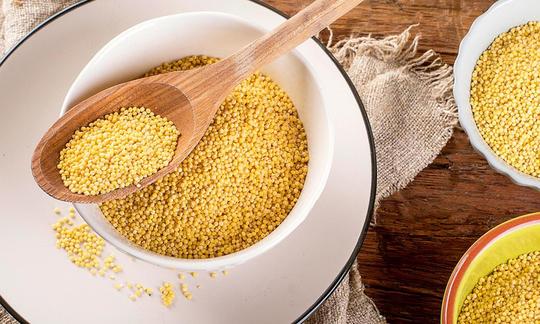

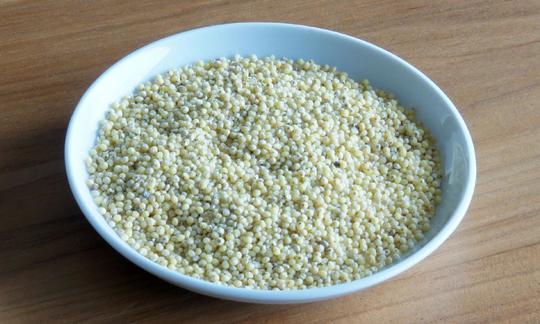

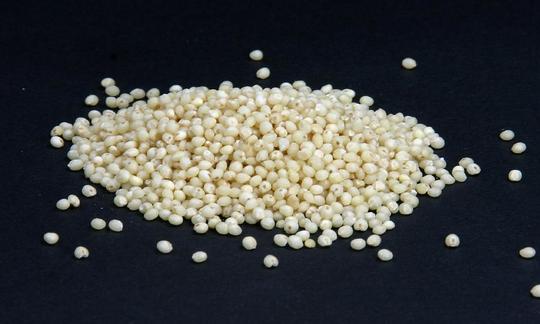

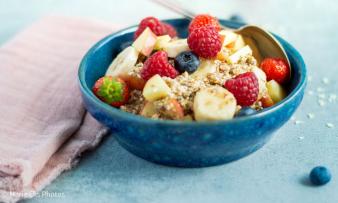
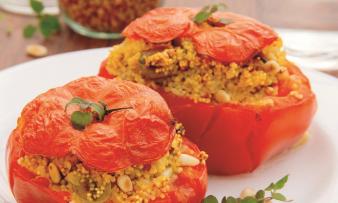
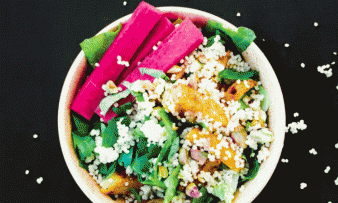


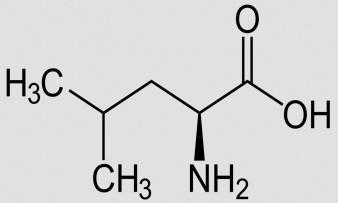


Comments